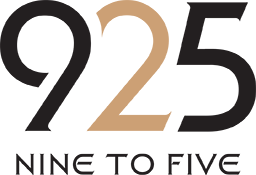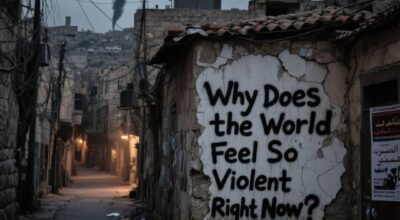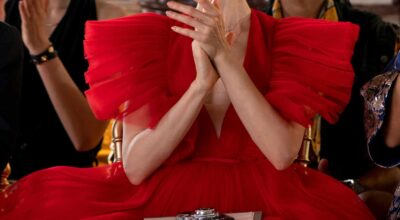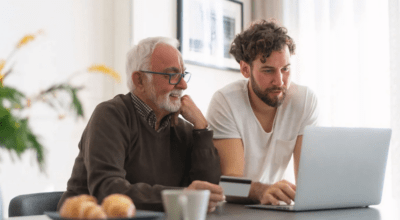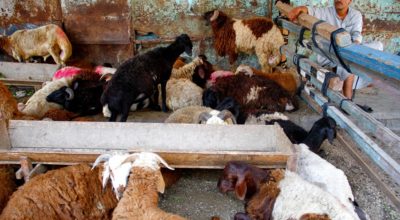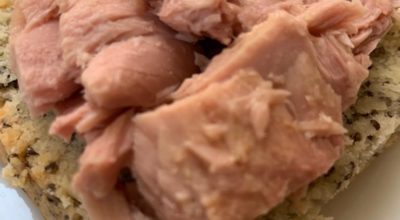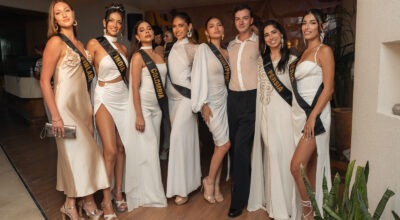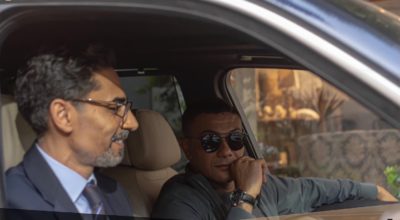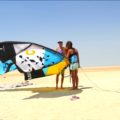We sat down with the up-and-coming Egyptian illustrator, Nora Zeid, to discuss ‘making it’ as an illustrator, how her work influences her perception of the world, the importance of rejection and receiving critical feedback whilst refining your style, and the value of clear communication with clients during the creative process.
Following a particularly impassioned, unnecessarily detailed, and frustration-fuelled rant about how Cairo’s traffic had—yet again—hampered my plans, my roommate embarked on a mission to reignite my faltering appreciation of the city.
She began hanging artwork around our little apartment, depicting Cairo in all manners of its complicated, chaotic beauty. Amongst the many pieces she hung, my favorites were a collection of black and white, postcard-sized illustrations of different locations in Cairo. Many of them depicted recognizable scenes from our quiet little corner of the city, Maadi. These intimately and intricately sketched pieces were produced by the wildly talented Nora Zeid.
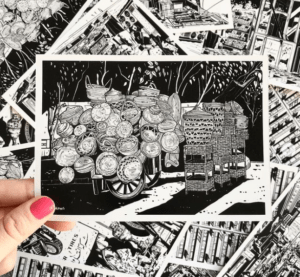
Khoos Basket and other postcards of different areas around Cairo. Photo Via: Nora Zeid’s Instagram @nazdraws
With a tumble of glorious curls and a facial expression that delicately balances steely determination with inviting warmth, Nora Zeid looks every bit the accomplished artist that she is. I was astounded to find out that she too had begun depicting Cairo in her art to redefine and reclaim her relationship with the city. She explained that she wanted the opportunity to appreciate it for the vibrant cultural treasure that it is:
“My relationship with the city was turbulent growing up. Having been brought up abroad, I failed to connect with it. I found it alienating. However, as I got older, I found myself wanting to understand the city rather than cast judgement on it.
This desire to understand is where it all began. The city fascinates me. It is layers upon layers of history and culture just waiting to be unravelled and studied.”
Although she was raised abroad, Zeid is an Egyptian illustrator, currently based in Dubai. Following her graduation, magna cum laude, from the American University in Sharjah in 2018, she began working as a creative designer at Abjad Design in Dubai. Her bold artistic ambition manifests in her impressive work ethic. Whilst maintaining her full-time job, Zeid worked on her illustrations every evening and weekend.
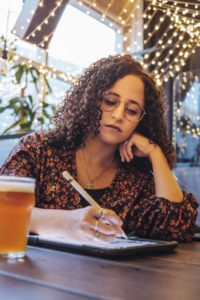
Nora Zeid drawing. Photo Via Mahmoud Essam.
As a freelancer, Zeid has worked with numerous recognizable clients like COTY, VICE, Matterbranding, and Big Hass. Although she has since voiced aspirations to move into academia, she admits that she will never fully be able to leave her illustrations behind:
“I could never quit illustration, even if I tried. It’s my passion, my hobby, my profession, a coping mechanism and I consider it part of my identity.”
Currently, however, Zeid is preparing for a solo exhibition hosted by Tashkeel—a gallery, studio, and art space in Dubai. She’s a member of their 2020-21 Critical Practice Program.
Despite her busy schedule, we were grateful to have the opportunity to speak with her about her work. Naturally, the conversation drifted into fascinating tangents wherein Zeid shared the wisdom she gained from her experiences. Here’s what she had to say:
When did your relationship with Cairo start in your work, and how did that make you view the city or change your relationship with it over the years?
On a personal level, my relationship with the city was turbulent growing up. Having been brought up abroad, I failed to connect with it. I found it alienating. However, as I got older, I found myself wanting to understand the city rather than cast judgment on it.
This desire to understand is where it all began. The city fascinates me. It is layers upon layers of history and culture just waiting to be unraveled and studied. My illustrations allow me to do so. With every piece, I capture a moment and expand it visually, freezing it in time. My use of black and white simplifies and reduces, while the details maintain the moment’s complexity.
My relationship with Cairo in my work is fairly new. These illustrations are visual explorations for an upcoming solo exhibition at Tashkeel, a gallery, and an art facility in Dubai, under their Critical Practice Program. I decided to focus my research on Cairo, specifically how, as a community, we assign value to its monuments and heritage sites. The research is still ongoing.
What are your favorite illustrations of Cairo and why?
My favorite illustration so far is “Bustling Winter Morning in El Moez”. I love how it is highly detailed, yet as your eye follows the vanishing point into the distance, these details become more and more abstracted without losing their complexity. I wanted to recreate my experience standing in that busy street, trying to take in its beauty as it shifted and moved around me.
It’s also the first design I screen-printed, so it means a lot to me.
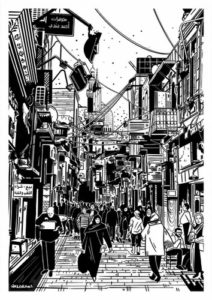
Zeid’s favorite artwork: “A Bustling Winter Morning in El Moez.” Photo Via: Cairopolitan
Many artists describe that they see things differently than regular people by virtue of their craft. Is that the case for you? And how has that changed over the years?
I believe anyone who is passionate about what they do sees the world through the lens of their field. Be it a chemist, engineer, doctor. I don’t think it’s something unique to artists and creatives.
“As an illustrator though, I observe things closely: people’s movements and gestures, their unique features. If something captures my attention, I can’t resist making a small sketch of it.”
I find myself framing things in my mind and imagining them as illustrations. What changed over the years is my ability to translate such thoughts and images into actual illustrations. The more I refine my skills, the better I become at visualizing the way I experience the world around me.
What’s the process of creating an illustration like now vs when you were starting out?
When I first started drawing regularly (around the age of 12), I would think of something and draw it directly. I didn’t think much of the process, only the end result.
Now, as a professional illustrator, I go through an iterative process. If anything, it’s often more important than the end result. I create several sketches to figure out the layout and composition and pick the most suitable one. I then lay out the colors I intend to use (if I am using any) and only then would I proceed with the final design. If the illustration is for a client, I would make it a point to communicate with them throughout the process, so that we decide on the direction of the artwork together before proceeding with the final outcome.

Postcards currently on sale at Cairopolitan. Photo Via: Nora Zeid
Does one learn to become a good illustrator? Or do they have to be born with the talent in your opinion?
I’d say having potential, or talent as you put it, is only a small part of it. It takes a lot of practice, patience, perseverance, and a willingness to go beyond your comfort zone. You also have to be open to constructive criticism. Not to mention that developing skills outside of illustration (such as basic communication and business skills) also play a big role in getting your work out there.
“In my opinion, talent can only take you so far.”
How did you start and learn to make a living as an illustrator? Is it challenging, modest, or lucrative? What’s it like and what challenges did you face at the beginning vs. now in doing so?
There is no real clear-cut answer to that question. The truth is, in the beginning, it was a balance between applying for opportunities while improving my illustration skills.
It is completely normal to face many rejections at first. As I improved, people started responding, and I began getting small jobs here and there. As more projects come in, I developed a system by which I manage my different commissions. It’s not very lucrative at first. Until very recently, I had a full-time job as a graphic designer while I built my illustration portfolio. I only quit recently to focus on my practice. Meanwhile, I work on maintaining a strong online presence, so people have access to my work.
One of my main challenges initially was communicating with clients. It takes a while to develop a smooth and professional workflow that works for both the client and the creative. I’ve thankfully reached a point where it’s no longer a burden but rather a part of the process I look forward to.
What are the key differences (emotional, quality of work, etc.) between making a living as an illustrator, and just illustrating to produce something meaningful or beautiful?
I think both can overlap. I have created work simply out of passion which people enjoyed so much, they approached me to make something similar for them. Sometimes I’ve worked with clients, such as Big Hass for example, who appreciate the process so much, and are so passionate about what they do, the outcome was incredibly close to my heart.
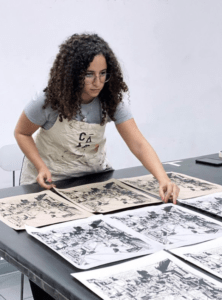
Zeid in a printing workshop at Tashkeel. Photo Via: Aman Darwish
However, having to implement someone else’s vision can, at times, get in the way of the work, especially if there is poor communication between the creative and the client. Situations like these make it easy to get discouraged. However, they’re still very good learning experiences.
“Needless to say, there is nothing quite like creating something simply because you feel the urge to make something beautiful. It’s therapeutic and emotionally fulfilling.”
Would you ever consider quitting illustration as a career?
I could never quit illustration, even if I tried. It’s my passion, my hobby, my profession, a coping mechanism and I consider it part of my identity. I do hope to pursue a career in design education, which is different than what I do now. However, even if I shift into academia, I believe illustration will always remain part of my practice.
What’s your typical workday like?
When I was working full-time, I would usually get up around 8:00 AM and get to the office at 9:30 AM. I worked at a multidisciplinary design studio in Dubai. I handled publication design, campaign design, artwork, and illustration. When the workday was over at around 6:00 PM, I clocked out and often headed to a cafe – preferably one with good music. I used to order a coffee, sit and draw. I worked on a commission, a personal piece, or my research. Once or twice a week, I would go to an event, gallery, or concert to meet people and mingle. I then headed home, continued to draw a bit while watching a show or movie, then go to bed at around 1 AM. I tried to take Fridays off to cool down, go for a swim and spend time with family. Saturdays I dedicated myself to working on commissions, networking, and/or my research. I recently resigned from my full-time position so I can focus on freelancing and preparing for my exhibit in September. My typical workday does remain pretty much the same though!
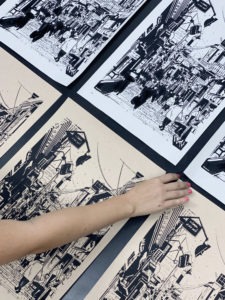
Nora Zeid working on her prints. Photo via: Aman Darwish
Did you work as an illustrator in both Dubai and Egypt? What are the differences in both as far as the career of illustration goes?
I am not sure about the field in Egypt as I have mostly worked in Dubai. I do have a few of my best pieces on sale at Cairopolitan though. I hope to move back to Egypt someday. The scene is incredibly vibrant, and I want to be a part of it.
In Dubai, I rely heavily on social media to build an online presence. I attend events where I mingle with fellow creatives. This often leads to meeting amazing people to potentially work and collaborate with. It also allows me to stay in touch with the latest happenings in the community. Overall, when it comes to commercial projects, I try to maintain a balance between staying true to my process while ensuring my design meets the needs of my clients. Although the field usually has tight deadlines, I always make sure that doesn’t affect the quality of my illustrations.
In your own personal utopia, would artists – including illustrators like yourself – work only to move, entertain, affect, or evoke some sort of emotion in people? Or does your utopia include them working for clients as well?
My utopia definitely includes illustrators working with clients. Maybe it is because I am a realist. Some clients commission illustrations because they believe in their power to evoke thoughts and emotions in people. And so, in my own personal utopia, creatives would be able to work to move people not only because they want to, but because society wants them to.
“Our society often romanticizes creatives as individuals who work simply out of pure passion, with no regard for financial compensation. The truth is, it is because we put so much into our work, that we should demand the right to be compensated, just like any other profession. Art, in all its forms, is not only beautiful, evocative of thoughts and emotions, but it is also valuable.”
You can support Zeid by shopping her prints on Cairopolitan, attending her first solo exhibition at Tashkeel (if you happen to be in Dubai!), or follow her progress on Instagram as @nazdraws.
